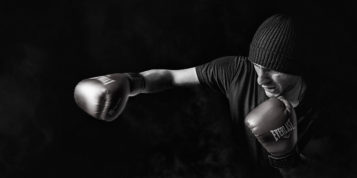The World Cup is a magnet for international audiences, with millions already tuning in to watch it on TV, streaming games online and discussing the action live on social media. This means sponsorship and advertising opportunities around the games are highly desirable. If done well, a brand can be the talk of the tournament with its clever marketing campaign. However, done wrong and the fall out from having millions of eyes on said campaign can destroy reputations and ruin businesses.
Every year we witness “brand fails” and unfortunately, these are often remembered more than any of the successes. So how can brands protect themselves from scoring an own goal when it comes to a successful marketing campaign around big events like the World Cup?
Sensing the danger
Social media could be the answer. Platforms like Twitter have become a breeding ground for sharing opinions, mirroring events as they happen and providing a public arena to criticise things the public are unhappy with. It has become one of the strongest platforms for mass brand awareness and should also be the first port of call for a brand wanting to gauge public opinion.
Understanding and utilising the alternative data that can be tracked on social media, will allow a brand immediate insights into public reaction, that could be used to boost the profits behind positive investments and make sure that any negative reactions are spotted early.
If the worst does happen and a brand is hit with a negativity following a campaign, there are two common types of crisis that can unfold.
The Sudden Flash
A “sudden flash” crisis is one that is defined by its speed. Each second can bring a different outcome to the same situation, from averting the issue, through to irreparable damage to the brand. For an unfolding crisis of this nature, real-time social media alerting is a vital first line of protection.
An example of this kind of crisis could be linked to player endorsements. Shirt sponsorship is banned in international football, so many companies circumvent this by targeting individual players to promote specific brands, cashing in on the fact that many supporters will be following their favourite player on social media and will emulate what he or she wears, drinks or eats. Social media platforms like Twitter are the prime place for this kind of sponsorship to be showcased, with brands paying high profile celebrities thousands of pounds to tweet a picture of them engaging with the brand.
However, there is the risk with investing this way, as the brand itself could become synonymous with that specific person for all the wrong reasons. It is important to bear in mind that just as a successful player can boost a brand’s reputation, one wrong move on the players part and it can have a negative impact on a brands reputation, and ultimately profit.
A prominent case in point for this was when Luis Suarez lost his sponsorship deal with 888poker after just a month of the commercial alliance started, because he bit another player during a match. This saw Suarez banned from playing for a while and forced 888poker to release a statement disassociating themselves from the player, which was covered by media and discussed online – unlikely to be the kind of publicity the brand had in mind when originally signing Suarez.
Coca-Cola also suffered an embarrassing brand fail, where their sponsorship with Ronaldinho was subsequently axed after he appeared with a can of Pepsi during a press conference. The mistake allegedly cost the FC Barcelona ambassador £1 million in unpaid earnings, whilst Coca-Cola called the whole incident “embarrassing”. With the public now able to act as paparazzi and post images online instantly, there is more risk than ever that a player could be caught doing things they shouldn’t. Brands need to stay alert and be able to react to “sudden flash” style crisis like these.
Having instant visibility of any social interactions relating to a brands sponsorships, is key to successfully understanding and managing an informed and timely response. Speedy and decisive action in the face of controversy can be highly effective as a defense strategy, as long as it is well informed. For instance, if a brand were to see that a campaign has been met with initial criticism online, or a player had been spotted acting in a potentially harmful way, they can take the steps needed to deal with, or disassociate themselves from, the situation, before it gets out of hand.
The Slow Burn crisis
Jumping on the situation and providing rapid response might be the right way to deal with a sudden flash crisis, however the second type of crisis that can happen, requires a different approach – this we refer to as the ‘slow burn’ crisis scenario.
These can take time to develop, and although they may start small, they have the risk of escalating over a few weeks or months. A notorious example of this was Pepsi’s “Live for Now” advert, featuring model and reality TV star Kendall Jenner. What many may not realise, is that the advert in question was published on YouTube way before it was picked up and slammed by the media. In fact, the furore about the theme of the advert actually started with a few people disapproving of the ad and sharing their opinion on the social media, which then was picked up and escalated into a media frenzy. Had these initial reactions and comments been acted on, the outcome could have been markedly different for the brand.
Another example of these slower burns, could be found in relation to the all too common scenario where an initial story breaks about a player’s extra marital affair, which then escalates as more women come forward and the fire is stoked within the media. Back in 2010 all was going well on the pitch for Wayne Rooney, but off the pitch stories about his private life were rife in the tabloids. The build up of this scandal meant that Coca-Cola dropped the then England captain from an advertising campaign saying it was “not appropriate” to use him at the time, then mutually agreed not to renew his contract a year later. Reactions by Coca-Cola that progressed, based on the information that came out over time.
Executives who have experienced these types of situations will be all too familiar with “the war room” setup that tends to be a classic response by a brand to a crisis scenario. Senior officials will spend endless hours in the meeting rooms while managing these “slow burn” crises – working out the best response, as well as how to articulate any decisions to the media and public. Often in the heat of these high stress scenarios, an inevitable siege mentality that takes hold. The ability to gain an aerial view of a crisis at this point is invaluable, as it enables internal communications teams and company spokespeople to work to the best of their abilities with the right information – rather than in a knee jerk fashion. This is why it is important to have the right tools and processes in place to manage events as they unfold.
Brands that can quickly evaluate consumer feedback from the information shared on major social platforms, and then respond accordingly, will be able to make more informed decisions. Through the combination of contextual clarity, speed and situational awareness – brands can utilise alternative data to launch forward attacks if needed, accurately defend their brand when in trouble and ultimately prevent own goals.





